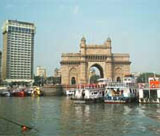
Mumbai, April 14: Tremors were today felt in Mumbai and parts of Western Maharashtra and Konkan and Kutch in Gujarat following an earthquake of magnitude 4.1 on the Richter Scale.
No damage to life and property has been reported so far.
The shocks were felt in Pune, Satara, Sangli, Kolhapur and Ratnagiri districts of Maharashtra, sources in the Met department said.
The Koyna dam in Satara is safe, they added.
The earthquake had its epicentre at Vamka taluka in Kutch, which is an active fault line, scientists at Institute of Seismological Research said.
Aftershocks measuring 2.9 on the Richter scale were also felt, they said.
Among those who felt the tremors in Mumbai were megastar Amitabh Bachchan, who resides in suburban Juhu.
"Earthquake in Mumbai ! Did you feel it.. I did..Shutters and building shook twice for few seconds," Bachchan tweeted.
In 2001, a massive earthquake occurred on January 26, with its epicentre in Bhuj in Gujarat. The quake killed around 20,000 people, injured another 167,000 and destroyed nearly 400,000 homes.





Comments
Add new comment